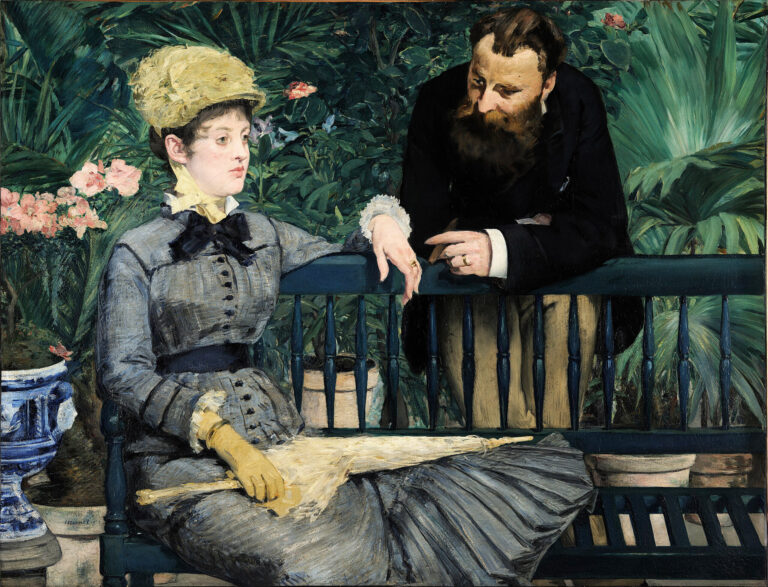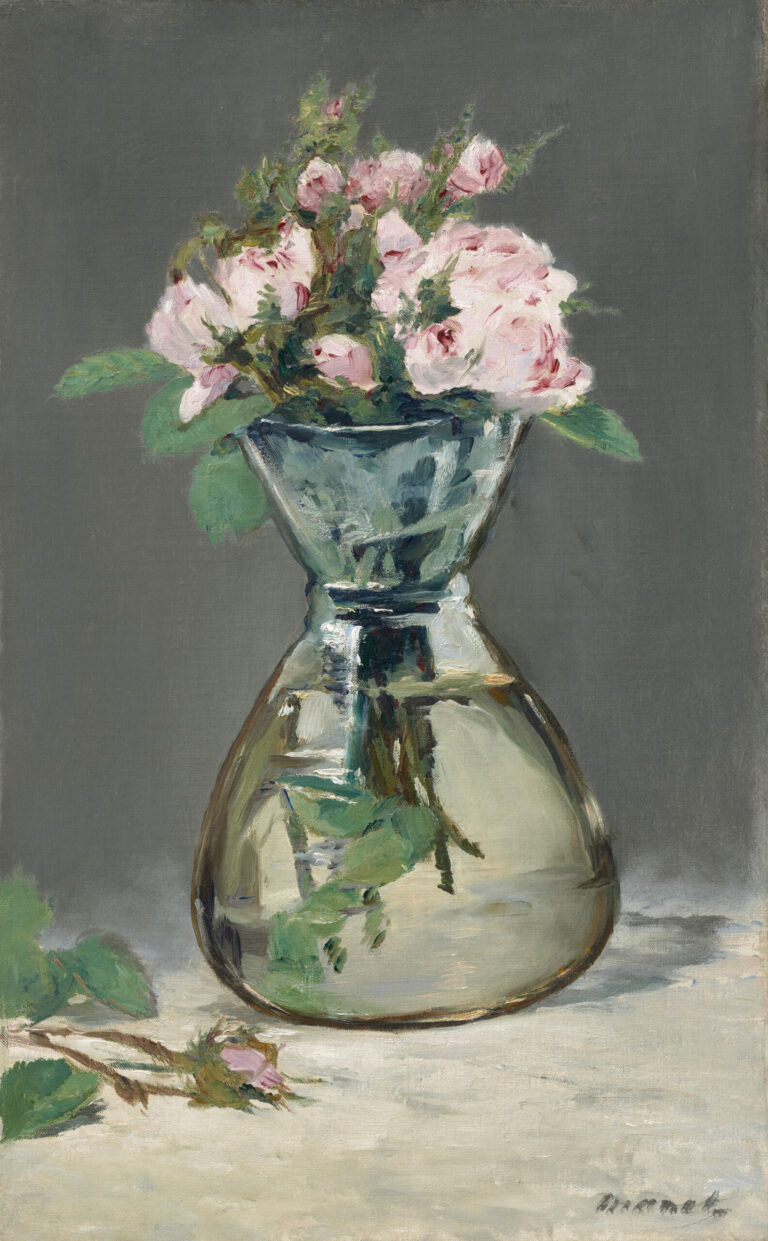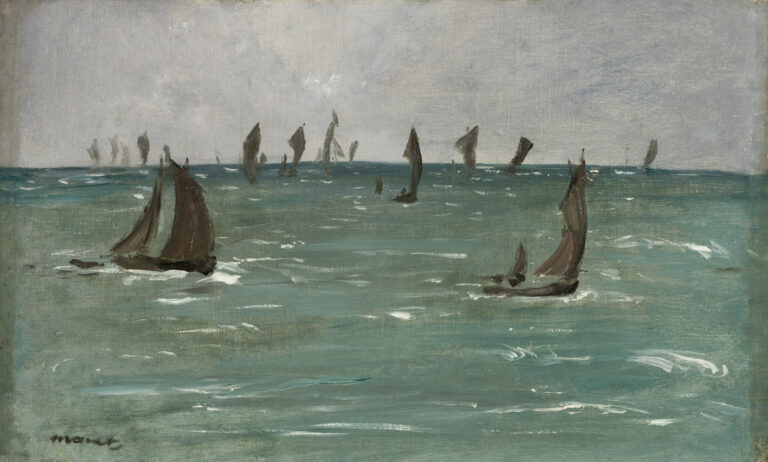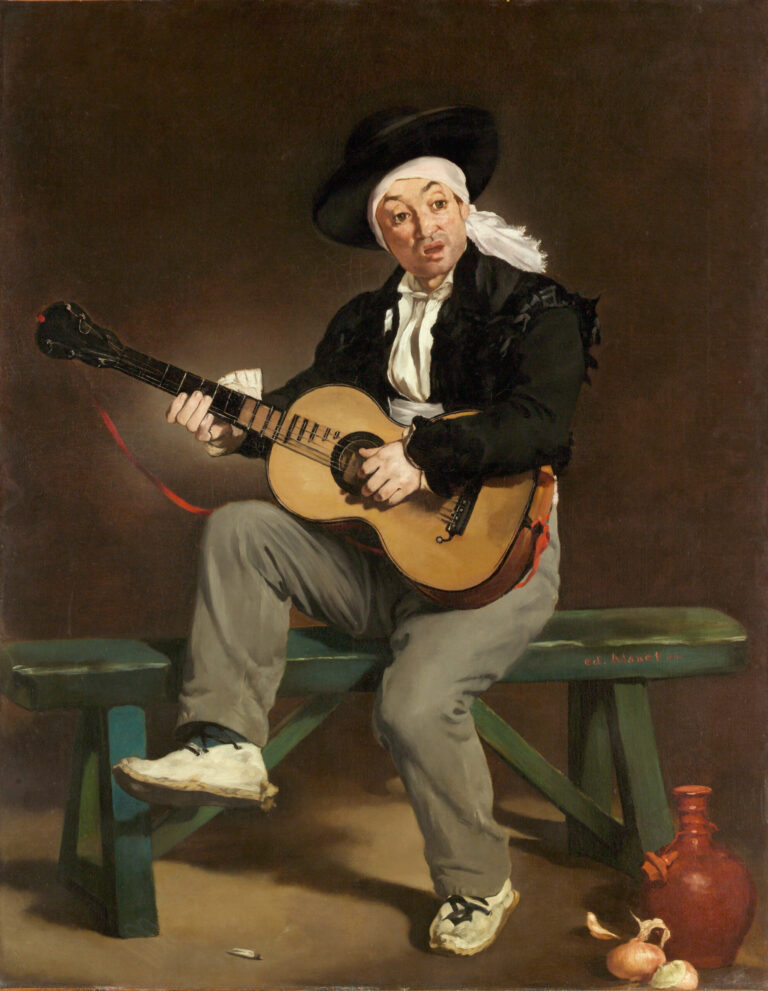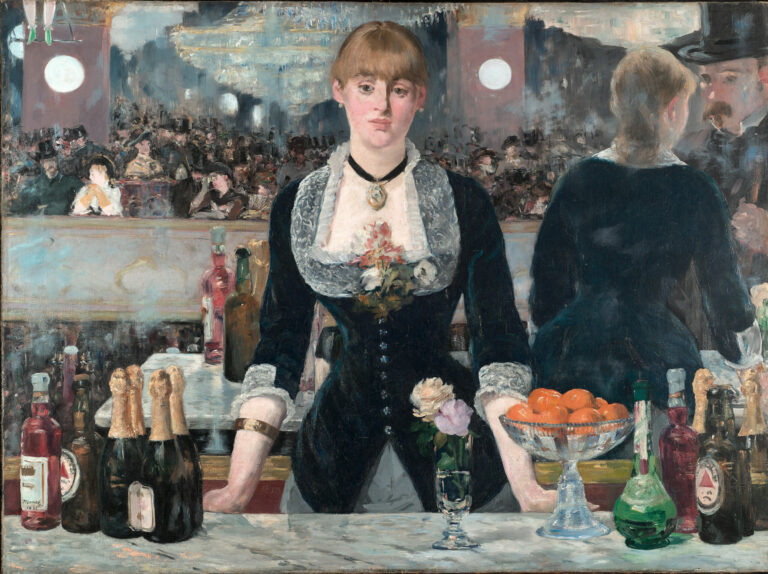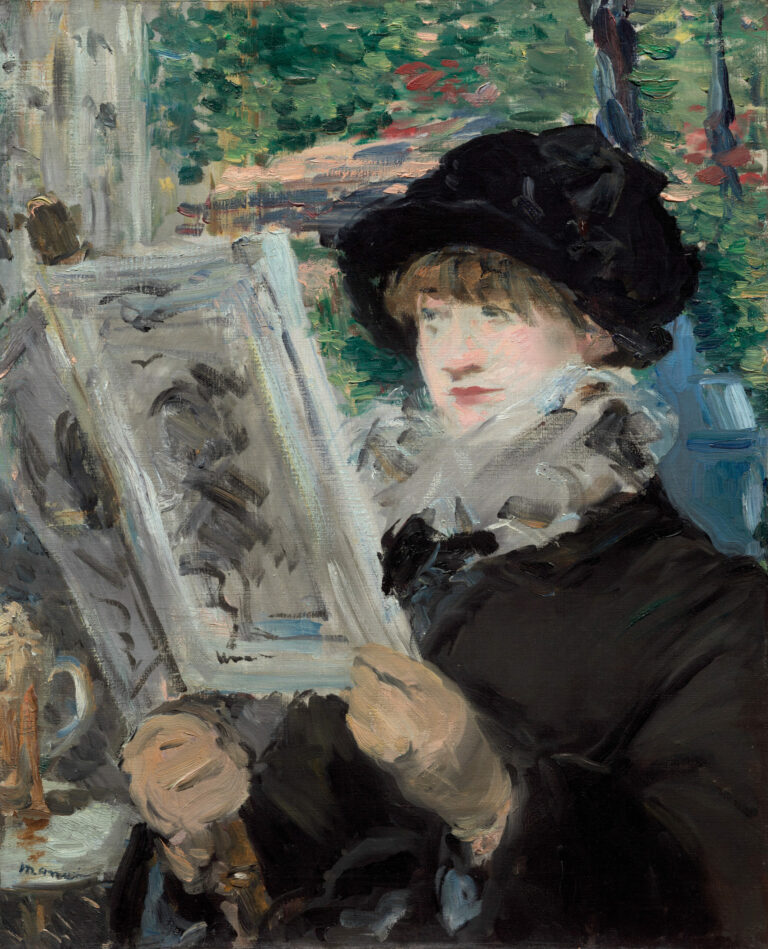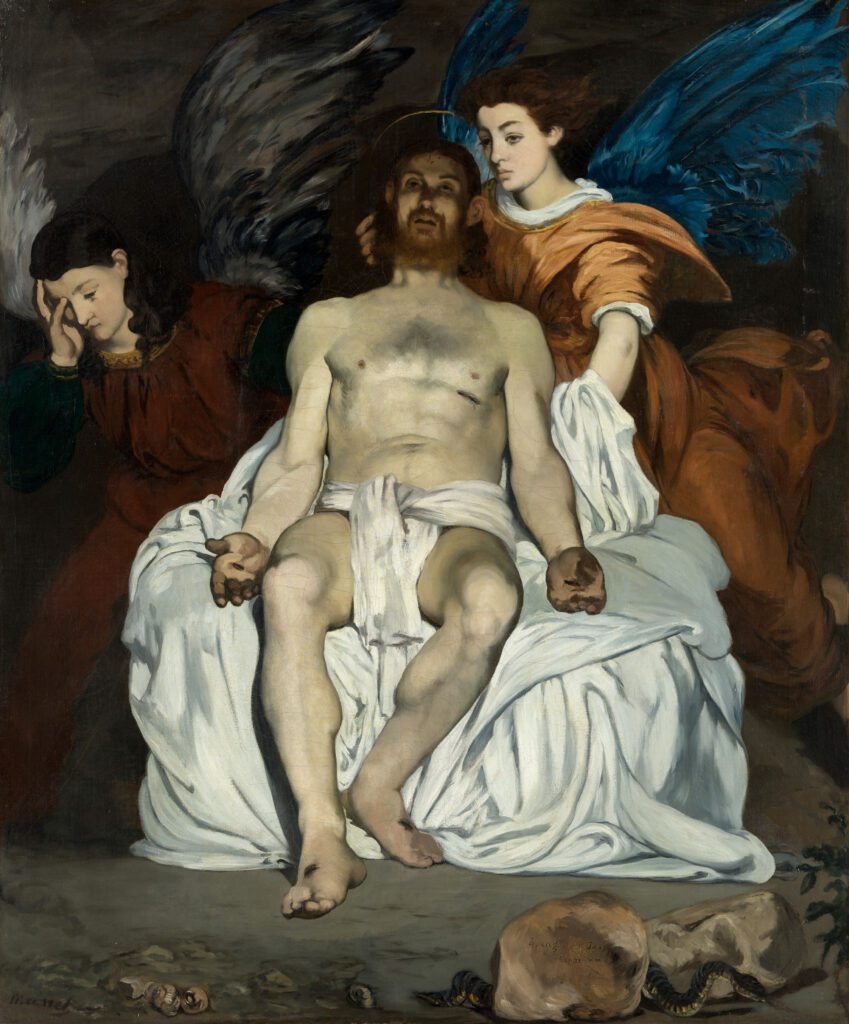
This masterwork captivates with its audacious modernity and emotional power.
In this striking composition, Manet disrupts the conventions of traditional religious painting. The pale, vulnerable body of Christ, rendered with almost clinical realism, rests in a precarious balance between life and death. The two angels surrounding him—one with bluish wings in an orange robe supporting the sacred body, the other withdrawn in a melancholic posture—create powerful dramatic tension. The masterful use of light, sculpting volumes with remarkable economy of means, makes the figures emerge from the surrounding darkness.
The bold chromatic contrasts between the luminous whites of the shroud, the livid flesh tones, and the rich terracotta hues of the angelic garments testify to a revolutionary pictorial sensibility that already heralds modern art.
Further Information
- The Dead Christ with Angels, by Édouard Manet, in 1864
- 179.4 x 149.9 cm
- The Metropolitan Museum of Art, Fifth Avenue, New York, Gallery 810
- https://www.metmuseum.org/art/collection/search/436950
Édouard Manet (1832-1883), a pivotal figure between academicism and modernity, remains one of the most influential artists of the 19th century. Trained in Thomas Couture’s studio but deeply inspired by Spanish masters like Velázquez, he developed a style characterized by bold color planes and extraordinary freedom of execution.
Often misunderstood by his contemporaries, his uncompromising approach to traditional subjects—as seen in this religious scene—provoked scandal and controversy. “The Dead Christ with Angels” from 1864 perfectly illustrates this subversive approach which, by challenging the pictorial conventions of his time, paved the way for the Impressionists and modern art as a whole.

